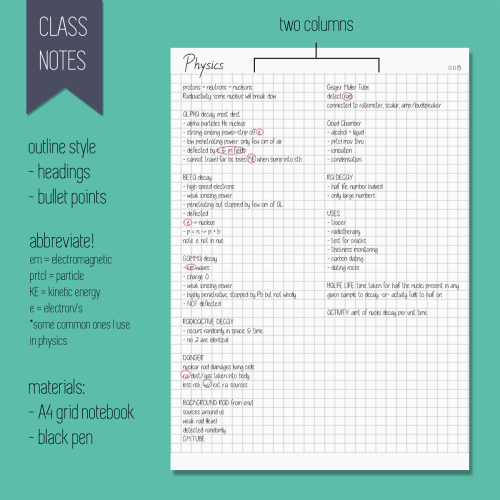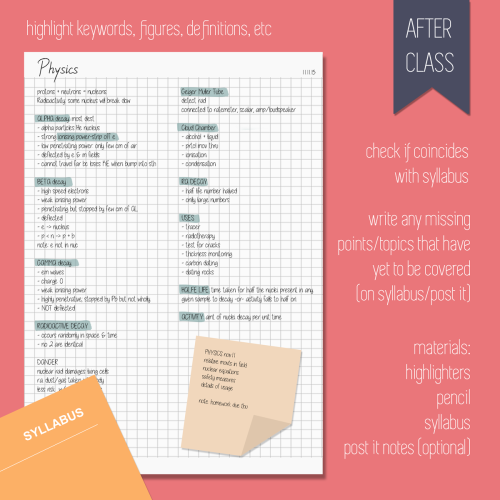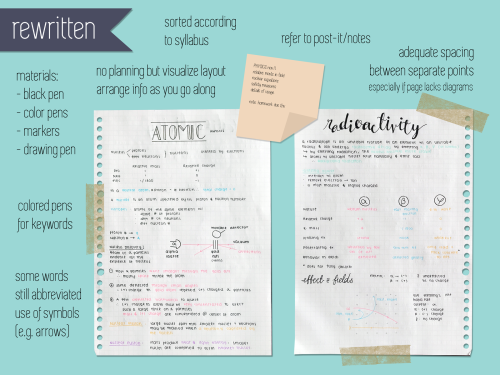Go As Far As You Can See; When You Get There, You’ll Be Able To See Farther.
Go as far as you can see; when you get there, you’ll be able to see farther.
J.P. Morgan (via quotemadness)
More Posts from Believetimshel and Others










Teen Wolf (2011 - 2017)



“Create Your Own Success” by Lauren Roberts from FJorde magazine, Issue 22 (2014).
Just a quick reminder:
Selfishness is putting the wants of yourself over the needs of others.
Self respect is putting the needs of yourself over the wants of others.
One is disregarding others, one is taking care of yourself.
The difference between the two is the difference between being a friend and a doormat.
Taking care of yourself does not make you a bad person.
I repeat:
Taking care of yourself does not make you a bad person.

8|27|16 • 10:36am
Weekly spread; I always associate August with an earthy and cool kind of tone for some reason. The first week of school has been really incredible–I made new friends, my teachers are fantastic, and I’m loving (if not at least tolerating) most of my classes!
AP Cram Packets Galore!
Someone on the Internet consolidated this list and sent it to me. So so helpful! GOOD LUCK everyone!
Art History Smarthistory: a multimedia web-book about art and art history Course-notes Barrons pdfs Biology AP Biology Exam Guide Chapter Review Giant Review Sheet Calculus AB & BC Cheatsheet (AB & BC) Stuff You MUST Know Cold for AP Calc (AB) If you see that, do this (AB) Chemistry AP Chemistry Notes Podcasts Quick Review Comparative Government and Politics Government Comparisons Cramsheet Study Sheet Computer Science Review: Part 1, Part 2 English Language Rhetorical Strategies AP Language Review Environmental Science Vocab to Know Tips APES Review European History STUDY GUIDES Exam Review Sheets French Language Cram packet Human Geography Course-notes Macroeconomics Every Graph You Need To Know (YouTube) Cram packet Microeconomics Cue cards Study guide
Physics B & C Cram sheet (B) Equations (C Mech) Equations (C Mech) Unit Notes (C Mech) Unit Notes © Unit Notes © Equations © Psychology Crib notes Cram packet Quizlet sets Statistics Cram packet Inference Procedures AP Stats formulas U.S. Government Cheat Sheet Review Materials U.S. History Cram Packet: part 1, part 2 The Giant AHAP Review Unit study guides Quizlet sets Quick Review The Comprehensive AP US History Study Guide World History Cram Packets and Review Sheets Cram packets by era Course-notes Mr. Hubbs History Reviews Released MC and review books Kiwiasian’s site ‒ released MC exams, review books in pdf Chilldude’s collection ‒ released MC exams, review books, textbooks in pdf
(note: NOT MY STUFF. The MC exams have been officially released by College Board. None of these materials were acquired through illegal means.)




Note-Taking
Hey guys! So I’ve been receiving questions regarding my note-taking style and strategy for quite some time now but I believe I have never answered them in detail. The good news is, I finally decided to make a post about this (plus, I had fun making the graphics :D). Note that I am a visual learner, so my note-taking methods may not be effective for some of you, but I hope you can all learn something.
Class Notes
I only use one notebook for all my class notes, an A4 grid notebook whose pages I divide into two columns.
I use the outline method for in-class notes, which means I write information chronologically, in the order that they are taught. Some teachers do not have properly structured presentations/lessons (good thing my physics teacher does) so when in need, I use arrows to connect related information.
Abbreviations to me are one of the most important things to master when taking notes. I personally make them up as I go along. Some examples of abbreviations I use are:
w/c - which
w/ - with
cpd - compound
envt - environment
digenz - digestive enzyme
It might be confusing, but to me, knowing the context and part of speech are enough for all abbreviations to be comprehended.
Here’s an example: ‘Indonesia’s tsunami pre-warning system is made up of two types of components’ could become ‘Indo’s snmi pre-warn sys 2 type comp’.
After Class
The first thing I would do is highlight keywords and terminology (and sometimes formulas). For physics, since my teacher is relatively succinct, I don’t really highlight, but for humanities and biology, I look for words that would be expected by a mark scheme, words that are crucial to the understanding of each particular piece of information.
I would then check if the material taught coincides with the syllabus, and if not, note down any points that are missing or have yet to be taught. You could write these on a post it or on the syllabus itself, but I prefer to highlight the syllabus’ pdf file.
Rewritten Notes
My rewritten notes are arranged based on the order they appear in the syllabus unless there are pieces of information that are related to more than one topic.
I use a black pen for rewriting notes as well as colored pens to write keywords and terminology only. I know some people who write whole sentences in colored pens but to me that is ineffective; we all have our own learning styles. When making tables, I usually use different colors for different columns (see the table for different types of radiation above) which is most often the color I associate with each word. For example, water would be blue, ocean would be a darker shade, ice would be a lighter shade, and water vapor would be purple.
I still abbreviate words in my rewritten notes, but they’re not as condensed as the ones in my class notes. Another thing I find helpful is leaving a bit of space between separate points especially if the page doesn’t have a lot of diagrams. I can’t think linearly, so I can’t remember super lengthy bullet points.
I use mildliners and a drawing pen to make my diagrams (more of these in my biology notes) but I only start with pencil if it’s a complex diagram. I rarely highlight my rewritten notes, but even if I do, it’s usually only the headings and formulas.
I don’t have a rough draft for my notes, but I try to visualize the layout. I try to alternate between words and pictures/diagrams so that when I’m sitting for an exam, all I have to do is imagine that I’m looking at that page and I can remember where everything is.
Well, that’s all from me. I hope that this information could be of some use to every single one of you. Don’t hesitate to ask me questions if you’re confused about note-taking or any other problems you might have :)









finished my infographic project for chem!

HOW TO ILLUSTRATE YOUR NOTES - MASTERPOST
I gather together all this amazing post about illustrated notes. As the visual learner I am, this is gold to me, and I know it will be useful for the visual learners out there!
• Sketchnote Tips - by Carol Anne McGuire
• Visual Notetaking by Succubus studies
• Tips for beginner sketchnoters by Sketchnotespace
• How to illustrate your notes by Reviseordie
• Guide to pretty notes by Theorganisedstudent
• How to make pretty notes by Studyspoinspo
• Sketchnotes by Raindropvalley
• What is visual notetaking? By Danyadsmith
• Fundamentals of Visual Notetaking By Danyadsmith
my blood type is coffee
(via butlercat)
-
 lecisevindist liked this · 1 year ago
lecisevindist liked this · 1 year ago -
 lifewithbona-blog reblogged this · 5 years ago
lifewithbona-blog reblogged this · 5 years ago -
 lifewithbona-blog liked this · 5 years ago
lifewithbona-blog liked this · 5 years ago -
 juskidd1 liked this · 5 years ago
juskidd1 liked this · 5 years ago -
 nickebackattacc liked this · 6 years ago
nickebackattacc liked this · 6 years ago -
 seth--hasan liked this · 7 years ago
seth--hasan liked this · 7 years ago -
 learn-to-thrive liked this · 7 years ago
learn-to-thrive liked this · 7 years ago -
 parven liked this · 7 years ago
parven liked this · 7 years ago -
 specialkkkk reblogged this · 7 years ago
specialkkkk reblogged this · 7 years ago -
 kyleewrites-blog1 reblogged this · 8 years ago
kyleewrites-blog1 reblogged this · 8 years ago -
 awanderinglostsoul liked this · 8 years ago
awanderinglostsoul liked this · 8 years ago -
 yousra-ysr reblogged this · 8 years ago
yousra-ysr reblogged this · 8 years ago -
 yousra-ysr liked this · 8 years ago
yousra-ysr liked this · 8 years ago -
 almahsery liked this · 8 years ago
almahsery liked this · 8 years ago -
 autumnqueenlane reblogged this · 8 years ago
autumnqueenlane reblogged this · 8 years ago -
 sweet-foretaste-of-joy reblogged this · 8 years ago
sweet-foretaste-of-joy reblogged this · 8 years ago -
 chanel-did-coco liked this · 8 years ago
chanel-did-coco liked this · 8 years ago -
 jacklynno liked this · 8 years ago
jacklynno liked this · 8 years ago -
 hotchocolatefactory liked this · 8 years ago
hotchocolatefactory liked this · 8 years ago -
 aya-fahmy liked this · 8 years ago
aya-fahmy liked this · 8 years ago -
 silverstargate reblogged this · 8 years ago
silverstargate reblogged this · 8 years ago -
 silverstargate liked this · 8 years ago
silverstargate liked this · 8 years ago -
 paramedic-penguin reblogged this · 8 years ago
paramedic-penguin reblogged this · 8 years ago -
 curluphoney liked this · 8 years ago
curluphoney liked this · 8 years ago -
 fluffycreme reblogged this · 8 years ago
fluffycreme reblogged this · 8 years ago -
 fluffycreme liked this · 8 years ago
fluffycreme liked this · 8 years ago -
 somewhatclose reblogged this · 8 years ago
somewhatclose reblogged this · 8 years ago -
 remembereternity reblogged this · 8 years ago
remembereternity reblogged this · 8 years ago -
 heyiforgottoask reblogged this · 8 years ago
heyiforgottoask reblogged this · 8 years ago -
 ylanelee liked this · 8 years ago
ylanelee liked this · 8 years ago -
 dont-b3-gon3 liked this · 8 years ago
dont-b3-gon3 liked this · 8 years ago -
 youmakemebloom-blog liked this · 8 years ago
youmakemebloom-blog liked this · 8 years ago -
 eri0l reblogged this · 8 years ago
eri0l reblogged this · 8 years ago -
 rdblessed reblogged this · 8 years ago
rdblessed reblogged this · 8 years ago
